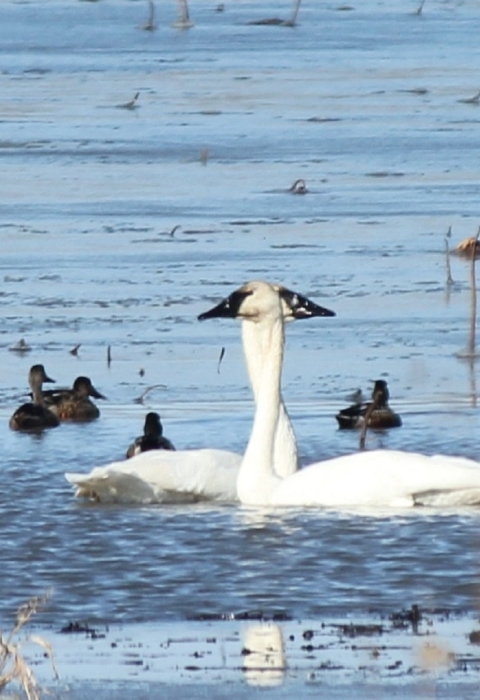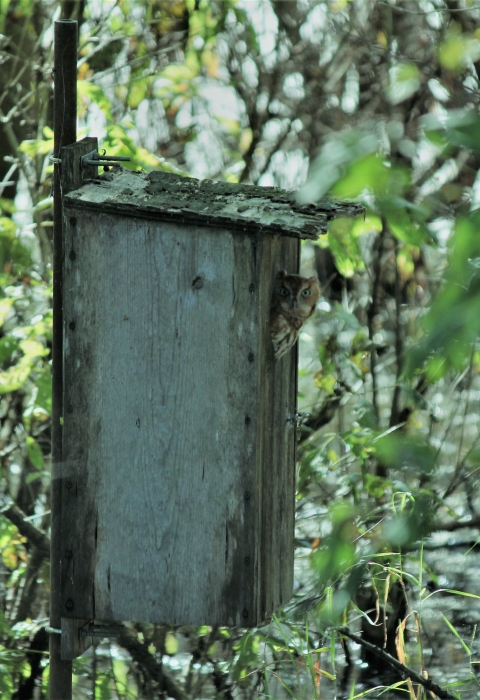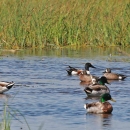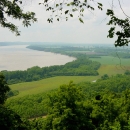About Us
What is now known as Great River National Wildlife Refuge began in 1958 as part of Mark Twain National Wildlife Refuge, a sprawling refuge which included units along the Mississippi River in Iowa, Missouri and Illinois. In 1964, part of Mark Twain National Wildlife Refuge was renamed Clarence Cannon National Wildlife Refuge, after a former Missouri Congressman who was instrumental in establishing that part of the refuge. In 2001, the remainder of the Mark Twain National Wildlife Refuge was further separated into four smaller refuges which became Great River National Wildlife Refuge, Two Rivers National Wildlife Refuge, Port Louisa National Wildlife Refuge and Middle Mississippi River National Wildlife Refuge.
The refuge restores and mimics the mosaic of habitats that were historically found along the Mississippi River. Slow moving backwaters, floodplain forests, wetlands, sedge meadows and grasslands combine to provide food, shelter and resting areas for a variety of birds.
Great River National Wildlife Refuge is comprised of six divisions:
- Delair Division - 1,710 acres in Pike County, IL
- Cherry Box Division - 298 acres in Shelby County, MO
- Fox Island Division - 2,009 acres in Clark County, MO
- Canton Division - 43 acres in Lewis County, MO)
- Long Island Division - 6,604 acres in Adams County, IL
- Slim & Haps Island Division - 728 acres in Pike County, MO
The refuge is managed from Clarence Cannon National Wildlife Refuge located in Annada, MO.
Our Mission
The mission of the National Wildlife Refuge System is to administer a national network of lands and waters for the conservation, management and, where appropriate, restoration of the fish, wildlife and plant resources and their habitats within the United States for the benefit of present and future generations of Americans.
Every national wildlife refuge national wildlife refuge
A national wildlife refuge is typically a contiguous area of land and water managed by the U.S. Fish and Wildlife Service for the conservation and, where appropriate, restoration of fish, wildlife and plant resources and their habitats for the benefit of present and future generations of Americans.
Learn more about national wildlife refuge was created for a special purpose. Some were created to protect migratory birds, others to protect threatened or endangered species or unique habitats, while others fulfill another special purpose. All activities allowed on refuges must be evaluated to make sure each activity will not conflict with the reason the refuge was founded.
Our History
1958 - Great River National Wildlife Refuge, formerly the Annada District of the Mark Twain National Wildlife Refuge was established when Secretary of the Interior Fred A Seaton signed a document giving official refuge status to certain lands along the Mississippi River between Rock Island and Alton, Illinois.
Other Facilities in this Complex
Great River National Wildlife Refuge Complex is comprised of three refuges: Great River National Wildlife Refuge, Clarence Cannon National Wildlife Refuge and Middle Mississippi River National Wildlife Refuge. The complex spans two states (Illinois and Missouri) and includes a series of island and land divisions along the Mississippi River. All three refuges are managed from the headquarters building located at Clarence Cannon National Wildlife Refuge in Annada, MO.




